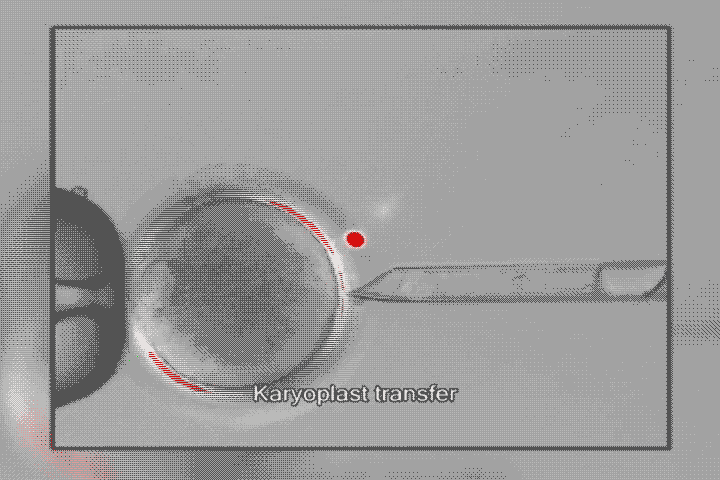Tune in Friday at 10 p.m. ET for our special program "Making Babies." America Tonight's correspondents investigate the billion-dollar international surrogacy industry.
Danielle Messer is already a mother of two, but she wants another baby pretty badly.
“Pretty badly might be an understatement,” Messer told America Tonight from her home in Kentucky. “I wanted a bigger family. I wanted a girl, really bad.”
But the 36-year-old says she’s scared of having another child because she and her two sons have a genetic disorder that affects their mitochondria – the tiny structures in cells that absorb nutrients and provide energy to the body. The mutations are passed down maternally and prevent the body from functioning normally.
Although both her sons have the genetic mutation, only her younger, 11-year-old is severely affected. Aristotle, or Ari as his family lovingly calls him, suffers from Leigh’s disease. He has an enlarged heart, low muscle tone and poor lung capacity. That means he can't speak, breathe, walk or eat on his own. One thing he can do is smile.
"I guess that makes me even feel like he’s somewhat still there," Messer explained. "Like that he’s him inside of there and not a vegetable completely."
It's unlikely that Ari will live past 17, because his heart keeps getting larger. He sometimes gets sick, and the next time that happens, Messer believes he may not make it. She’s preparing to say goodbye.
“It’s probably going to be something that messes with me for a long time,” Messer said. “I mean, it is what it is, but I don’t feel like it’s fair to keep him with this kind of quality of life.”
It may be hard to believe, but an Oregon-born monkey named Chrysta is what's giving Danielle and her family hope that she could have a healthy baby.
Chrysta is one of five healthy monkeys born with donated mitochondria. She’s the result of years of groundbreaking research conducted by Dr. Shoukhrat Mitalipov, a senior scientist at the Oregon Health & Science University in Portland.
Mitochondria have their own DNA, passed down from the mother. But through Mitalipov’s procedure, which places the nucleus from the mother’s egg into a donor egg that has had its nucleus removed, the defective mitochondria, which float in the egg’s cytoplasm outside the nucleus, are left behind.
Its successful outcome in monkeys could mean wonders for women like Messer, who carry mitochondrial mutations, but want to have children without passing on the genetic defect.
“Knowing that it works in a monkey, we knew this procedure will be ... pretty easy to translate to humans,” Mitalipov told America Tonight. “We started immediately working toward replicating this, at least at early stage, with human eggs.”
Without Federal Drug Administration approval, he can't fertilize those human eggs. But if he could, and the procedure was successful, the resulting baby would carry genetic material from three parents – the mother, the host egg’s donor and the father.
Sheldon Krimsky
bioethicist
The FDA is now reviewing whether Mitalipov should be permitted to proceed with human testing.
Critics argue that making genetic changes through a procedure like this could have unintended health consequences, and that the process helps only a small number of women with these disorders.
Sheldon Krimsky, a bioethicist and professor at Tufts University, attended the FDA meeting on behalf of the Council for Responsible Genetics. He questions whether the procedure is even necessary. There are other options for women with mitochondrial defects to have healthy children, such as getting an egg from a donor, or having prenatal genetic diagnosis to find eggs with fewer mutations, or simply adopting a child. Krimsky also questions how far scientists plan to go in their efforts to engineer humans.
“What we are dealing with is when we start to genetically modify babies is how do we know when to stop?” Krimsky said. “ We know when to start – let’s say for some reason like mitochondrial disease, but when do we stop? And in this country we don’t have a regulatory system that tells us when to stop or tells us [what] kind of regulations we need.”

One example he cites is the possibility of "designer babies."
“What principle would you use to say, ‘OK, I’m going to allow it for this, but I’m not going to allow it for something else?'" Krimsky said. “Next thing somebody will [say] is, 'Make my child more intelligent. I think there are these DNA sequences that can do it. So let me put that into the fertilized egg.' And who’s to stop somebody once we open the door for doing the mitochondrial work?”
But Mitalipov believes the opposition only exists because the procedure is so new. "It's never been tried or tested," he explained. "This is the next generation of medicine."
As the FDA considers whether Mitalipov should move forward with human clinical trials, Messer is hoping for two miracles: that she has more time to enjoy with her youngest son, and that the procedure comes through before it's too late for her to have another baby. Without it, she said, she would never want to get pregnant again.
“I think it’s very unfair to the child," Messer said.
Error
Sorry, your comment was not saved due to a technical problem. Please try again later or using a different browser.